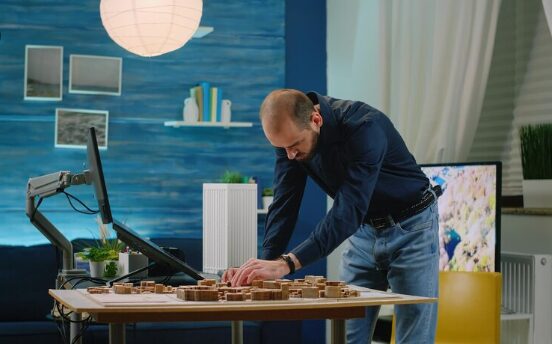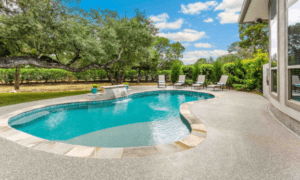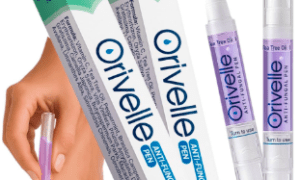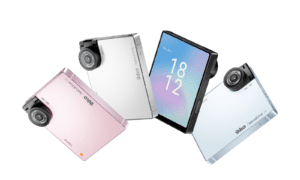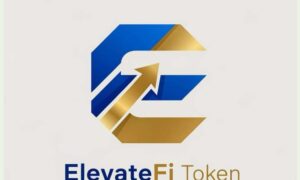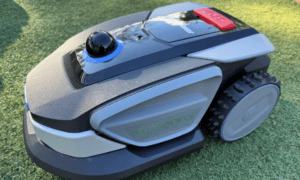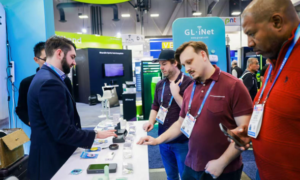Creating pixel art for indie games and animated projects requires specialized tools that understand the unique demands of low-resolution artwork. Aseprite has become my primary software for everything from character sprites to detailed environment tiles, offering a focused feature set that addresses the specific needs of pixel artists.
Core Features and Real-World Applications
Aseprite excels at animation workflow, which sets it apart from general-purpose graphics editors. The timeline interface allows frame-by-frame animation with onion skinning that shows previous and next frames as ghosted overlays. During a recent character animation project, this feature proved invaluable for creating smooth walk cycles – being able to see three frames ahead and behind while drawing helped maintain consistent volumes and spacing.
The indexed color mode support goes beyond basic palette management. When working with retro-style games that require specific color limitations, Aseprite handles palette constraints elegantly. The software maintains color indices even when copying between documents, preventing the color shifts that plague other tools. Recently, while creating assets for a Game Boy-style project limited to four colors, the palette management tools ensured perfect color consistency across dozens of sprite sheets.
The tile map features have transformed my environment creation workflow. Instead of manually copying and arranging tiles, the auto-tiling system intelligently places tiles based on surrounding patterns. Creating a platformer tileset with proper edge transitions took hours rather than days. The tile map layer type maintains the relationship between tiles and their source, enabling global updates when refining tile graphics.
Pixel-perfect tools distinguish Aseprite from standard drawing applications. The pencil tool creates precise single-pixel lines without anti-aliasing artifacts. The dedicated pixel-perfect mode ensures freehand curves translate cleanly to pixel art aesthetics. These seemingly simple features eliminate the constant cleanup required when using general graphics software for pixel art.
Performance Analysis and Metrics
Aseprite runs remarkably light, consuming typically 50-150MB of RAM during standard projects. Even with complex animations featuring 100+ frames across multiple layers, memory usage rarely exceeds 300MB. This efficiency enables smooth operation on modest hardware where Photoshop would struggle.
The software handles large canvas sizes surprisingly well. Working on a 4096×4096 pixel environment map with 20 layers maintains responsive performance. Frame rates during animation playback remain consistent at 60 FPS for standard sprite sizes (up to 256×256 pixels), though larger canvases may require preview scaling for smooth playback.
File operations execute nearly instantaneously. Saving a 50-frame animation with 10 layers completes in under a second. The native .aseprite format uses efficient compression, keeping file sizes manageable – a typical character animation file measures 200-500KB versus several megabytes for equivalent PSD files.
Export performance impresses particularly for sprite sheet generation. Exporting 200 animation frames to a packed sprite sheet with accompanying JSON data takes roughly 3-5 seconds. The batch export operations handle hundreds of files without stability issues.
Detailed Competitor Comparison
GraphicsGale offers similar pixel art focus at no cost, making it attractive for beginners. However, its interface feels dated, and the animation tools lack Aseprite’s refinement. GraphicsGale’s palette management works adequately but misses convenient features like gradient mapping and automatic palette generation from existing artwork. The lack of recent updates leaves it feeling abandoned compared to Aseprite’s active development.
Photoshop brings overwhelming power but lacks pixel art specialization. Creating clean pixel art in Photoshop requires constantly fighting anti-aliasing and managing numerous settings. The timeline animation features work but feel clunky compared to Aseprite’s streamlined approach. Photoshop’s $20/month subscription costs significantly more than Aseprite’s one-time purchase, making it hard to justify for dedicated pixel art work.
Pro Motion NG matches Aseprite’s pixel art focus while adding advanced features like tile mapping and color cycling. The interface complexity intimidates newcomers, though power users appreciate the additional control. Pro Motion’s $60 price point sits higher than Aseprite’s $20, which feels justified only for users needing its specific advanced features. Aseprite’s cleaner interface and stronger community support give it the edge for most users.
Piskel provides free browser-based pixel art creation, perfect for quick projects. The limited features and web-based constraints become apparent in serious work. No layer support and basic animation tools make it suitable only for simple sprites. Aseprite’s native application performance and comprehensive toolset justify the modest price for anyone creating pixel art regularly.
Platform-Specific Considerations
Aseprite supports Windows, macOS, and Linux with near-identical features across platforms. The Windows version integrates well with tablet drivers, providing pressure sensitivity with Wacom and similar devices. Mac users enjoy native Apple Silicon support in recent versions, delivering excellent performance on M1/M2 hardware.
The Linux version requires some initial setup for tablet support but runs flawlessly once configured. Package managers in major distributions often include Aseprite, simplifying installation. Building from source remains an option for users wanting the latest features without purchasing.
Steam integration provides convenient updates and cloud save synchronization. However, the standalone version from the developer’s website offers DRM-free usage and supports the developer more directly. Both versions receive simultaneous updates.
Technical Requirements and Workflow
System requirements remain minimal: any computer from the last decade runs Aseprite comfortably. The software requires roughly 128MB RAM and 15MB disk space. GPU acceleration isn’t utilized, making dedicated graphics cards unnecessary.
Initial setup involves minimal configuration. The default keyboard shortcuts follow common standards, though customization options accommodate various workflows. Creating custom tool presets and workspace layouts streamlines repetitive tasks.
Integration with game engines works smoothly through comprehensive export options. Unity and Godot import Aseprite files directly through community plugins. The command-line interface enables automation for projects requiring asset pipeline integration. Batch conversion scripts handle large-scale export operations efficiently.
Best Practices From Extensive Usage
Organizing layers logically saves enormous time during animation. Separating body parts onto different layers enables easy animation through transformation rather than redrawing. My standard character setup includes layers for head, torso, arms, and legs, allowing quick pose adjustments.
Reference layers revolutionize the animation process. Loading video references or concept art as locked reference layers maintains consistency across frames. The reference layer opacity adjustment helps balance visibility without interfering with active drawing.
Custom brushes extend beyond basic shapes. Creating brushes for common elements like grass, clouds, or texture patterns accelerates environment creation. The brush system supports dynamics based on velocity and pressure, enabling organic-feeling pixel art despite the medium’s constraints.
Keyboard shortcut mastery dramatically improves efficiency. Binding frequently used colors to number keys eliminates constant palette navigation. Setting up custom shortcuts for frame navigation and layer visibility toggles creates a fluid animation workflow.
Business Value and ROI Analysis
At $20 for a perpetual license, Aseprite represents exceptional value. Commercial game developers recover this cost within the first hour of productivity gains versus free alternatives. The one-time purchase model respects users’ budgets while supporting continued development.
Educational licenses at $10 make it accessible for students learning game development. The skills transfer directly to professional work, making it an excellent training investment. No subscription fees mean schools can purchase once and use indefinitely.
For professional studios, the efficiency gains multiply across teams. Standardizing on Aseprite eliminates format conversion issues and ensures consistent asset production. The modest per-seat cost makes it feasible to license for entire teams.
Who Should Use Aseprite
Indie game developers creating pixel art games find Aseprite indispensable. The animation tools and game engine integration streamline asset creation. The focused feature set avoids the bloat of general-purpose software while providing everything needed for game graphics.
Pixel artists working on commissioned pieces benefit from the professional tools at an accessible price. The software handles everything from small icons to large illustrated scenes. Animation capabilities open additional revenue streams through animated commissions.
Digital artists exploring pixel art appreciate the gentle learning curve. Unlike complex professional software, Aseprite’s focused interface enables quick productivity. The excellent documentation and community tutorials support skill development.
Traditional artists interested in pixel art might find the medium’s constraints frustrating initially. Those expecting painting software features should look elsewhere. Aseprite excels at pixel art but doesn’t attempt to replace general digital art tools.
Final Verdict
Aseprite earns its position as the go-to pixel art and animation tool through focused design and consistent execution. The software does exactly what it promises without unnecessary complexity. While it won’t replace comprehensive graphics suites for general artwork, it excels within its niche.
Minor frustrations exist: text tools remain basic, gradient options feel limited, and some advanced selection tools would be welcome. These limitations rarely impact pixel art creation but occasionally require workarounds for specific effects.
The active development and responsive community create confidence in the software’s future. Regular updates add requested features while maintaining the core simplicity that makes Aseprite approachable. The developer’s commitment to the pixel art community shows through thoughtful feature additions and bug fixes.
For anyone serious about pixel art creation, Aseprite represents an essential investment. The combination of powerful animation tools, pixel-perfect drawing capabilities, and efficient workflow features justify the modest price many times over. Whether creating game assets, animations, or standalone pixel artwork, Aseprite provides the specialized tools that make pixel art creation enjoyable rather than frustrating.

